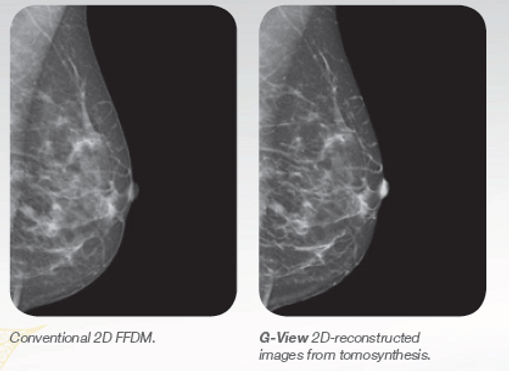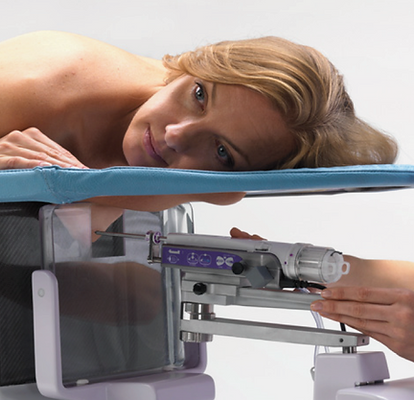top of page
Giotto Class 30000
A patented breast tomosynthesis device that implements several innovative 3D solutions. It is designed with original leading-edge technologies that guarantee superior clinical results while using low dose.
GIOTTO CLASS is a versatile system with which you can perform:
- TOMOSYNTHESIS
- SYNTHESIZED 2D IMAGE
- FFDM
- BIOPSY with Tomosynthesis or Stereo with the patient in a PRONE or UPRIGHT position

-
GIOTTO CLASS is the result of 25 years of experience in the research and development of better instruments for the earliest possible diagnosis of breast cancer.
-
It is precisely this experience that has allowed us to build a complete and multifunctional system that offers in a single solution well-known functions as well as other features that represent true innovation.
-
GIOTTO CLASS is a breast tomosynthesis device that implements several innovative 3D solutions.
-
It is designed with original leading-edge technologies that guarantee superior clinical results while using low dose.
-
In addition to TOMOSYNTHESIS, GIOTTO CLASS offers a multitude of diagnostic solutions such as biopsy with tomosynthesis images with the patient in an upright or prone position.

-
Simple to use cutting-edge technology developed to offer superior ergonomics.
-
AWS: intuitive, touchscreen controls, and complete of RAFFAELLO, a dedicated management software for breast care.
-
GIOTTO CLASS is a versatile system with which you can perform: - TOMOSYNTHESIS - VIRTUAL IMAGE - FFDM - BIOPSY with Tomosynthesis or Stereo with the patient in a PRONE or UPRIGHT position - DUAL ENERGY
-
You have the highest clinical quality thanks to a number of cutting-edge technologies: Tomosynthesis: Step & Shoot Original Pixels: No Binning (85 µm)
-
Iterative reconstruction software dedicated to Tomosynthesis Tomosynthesis with a 30° angle Only 11 exposures


G-VIEW Synthesized image from 3D to 2D
The new integrated G-View software allows the reconstruction of a standard mammography projection from the 3D Tomosynthesis images data set. The G-View 2 image is generated without the need an extra 2D mammography exposure, so using the generated synthesized 2D image instead of the current 2D plus 3D image, it drastically reduces the patient’s radiation exposure and compression time. You can review the G-View projections after Tomosynthesis exposure in just a few seconds, with a simple click.
Step & Shoot
Tomosynthesis takes place by moving the X-ray tube , but stopping it at each exposure, thereby allowing exposure while the tube is stationary; the result is an image that is completely devoid of blurring and has sharper outlines.
Iterative Reconstruction Software
This dedicated software for tomosynthesis was designed to produce images with the least number of artifacts, to be extremely fast and accurate in reconstruction, and to achieve a dramatic dose reduction. It is versatile and allows the application of geometries and angles to optimize the reconstuction of tomosynthetic images.
No Binning
For your tomosynthesis you use the amorphous selenium detector at maximum resolution, reading each pixel of 85 µm, without binning, because the binning gives a loss of resolution. We guarantee the best visualization of microcalcifications and structures.
Tomosynthesis with 30°
Optimizes the slice sensitivity profile of 3D information with a rapid scan.
Only 11 exposures
This makes it possible to achieve, for every single exposure, a high signal-to-noise ratio, with a consequent increase in image quality. 11 exposures is a solution that gives you image quality and a high acquisition rate.
Never before seen ergonomics
-
Tomosynthesis and 2D at 360° in upright or tilted position.
-
GIOTTO CLASS takes advantage of the gravity effect to view retromammary tissue more easily.
-
This exclusive feature is offered only by GIOTTO CLASS. All movements are automatic and programmable.
Never before seen versatility
GIOTTO CLASS can be transformed, by simply and quickly moving of inclination, into a dedicated unit for biopsies performed with Tomosynthesis with the patient in a prone or upright position. You will have a one-of-a-kind instrument for successfully resolving all of your imaging demands. The conversion to prone unit is quick and easy. It is easy for the patient to get on the biopsy table using the step. Thanks to the four wheels, the biopsy table can be quickly positioned and the breast centered ready to start the biopsy procedure.
Giotto Class offers you a superior solution for all of imaging challenges
-
It is possible to work in Tomo, Stereo, or Combined mode.
-
The prone position gives you complete confidence in achieving the best biopsy results with the highest degree of comfort for the patient.
-
The operator has maximum accessibility to the breast and ample work space in the operating area. RAFFAELLO: a fast and intuitive software.
-
GIOTTO CLASS is compatible with every biopsy system currently on the market and provides.
-
360° biopsy access with lateral and cranial caudal approaches.
-
Mobile wheel-mounted AWS that can be moved to the operating area for maximum visibility and accessibility to the displays for the operators.


Prone Biopsy
-
The biopsy table can be either connected to the mains or used with batteries
-
Vertical range of 800 m
-
Motorized adjustment of the backrest from 45° to the horizontal position in order to make pre- and post-examination phases easier
-
Remote control to remotely adjust both the upright movement and the backrest position
-
Largest breast adjustable aperture with a diameter of 250 mm, movable to 100 mm in all directions
-
Side anti-fall protection guard rails Side anti-fall protection guards
-
Pairs of wheels which can be braked separately for safety purposes during the examination
-
Extension supports for non-standard patients Comfortable left and right steps for the patient
bottom of page




